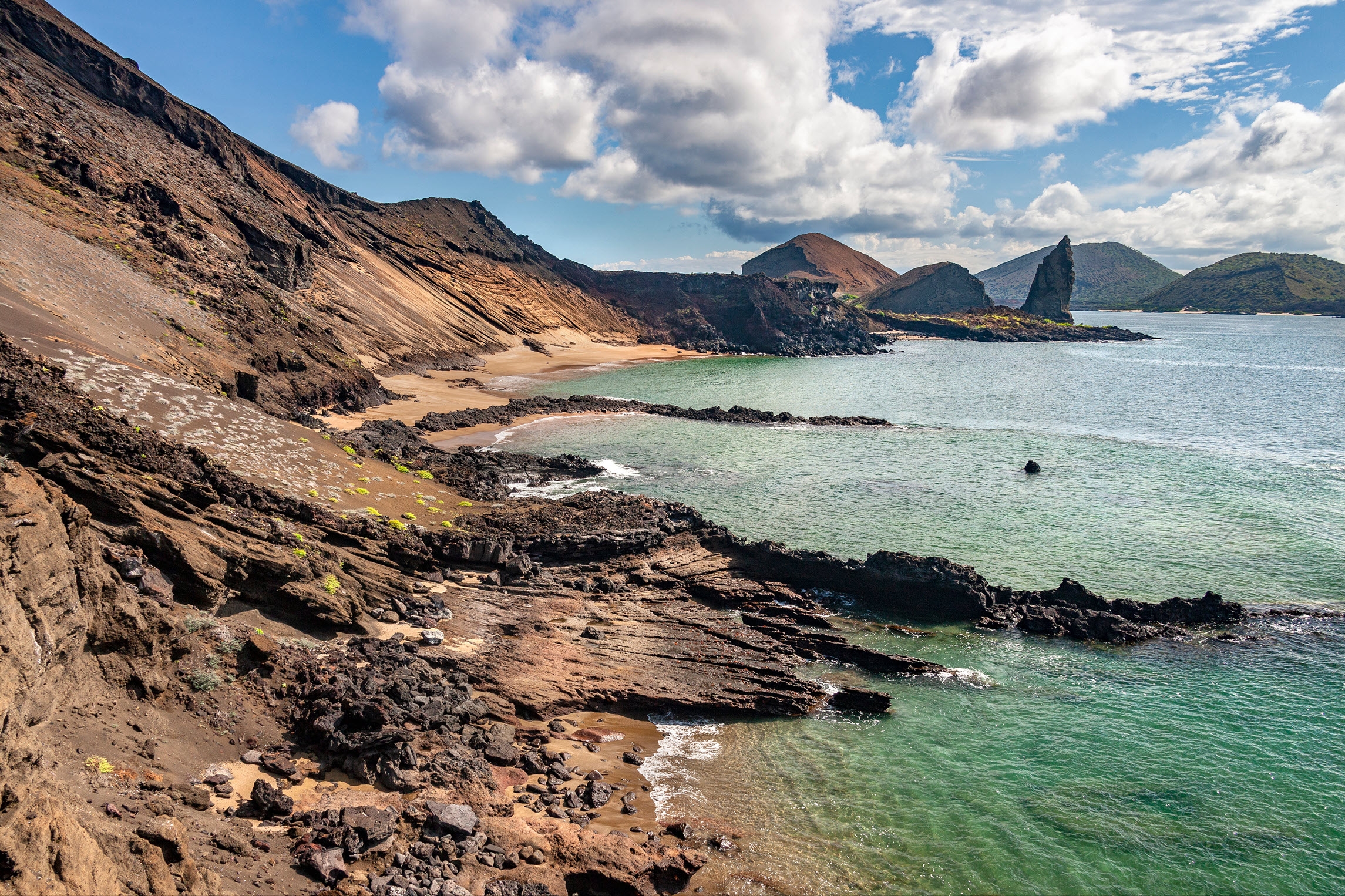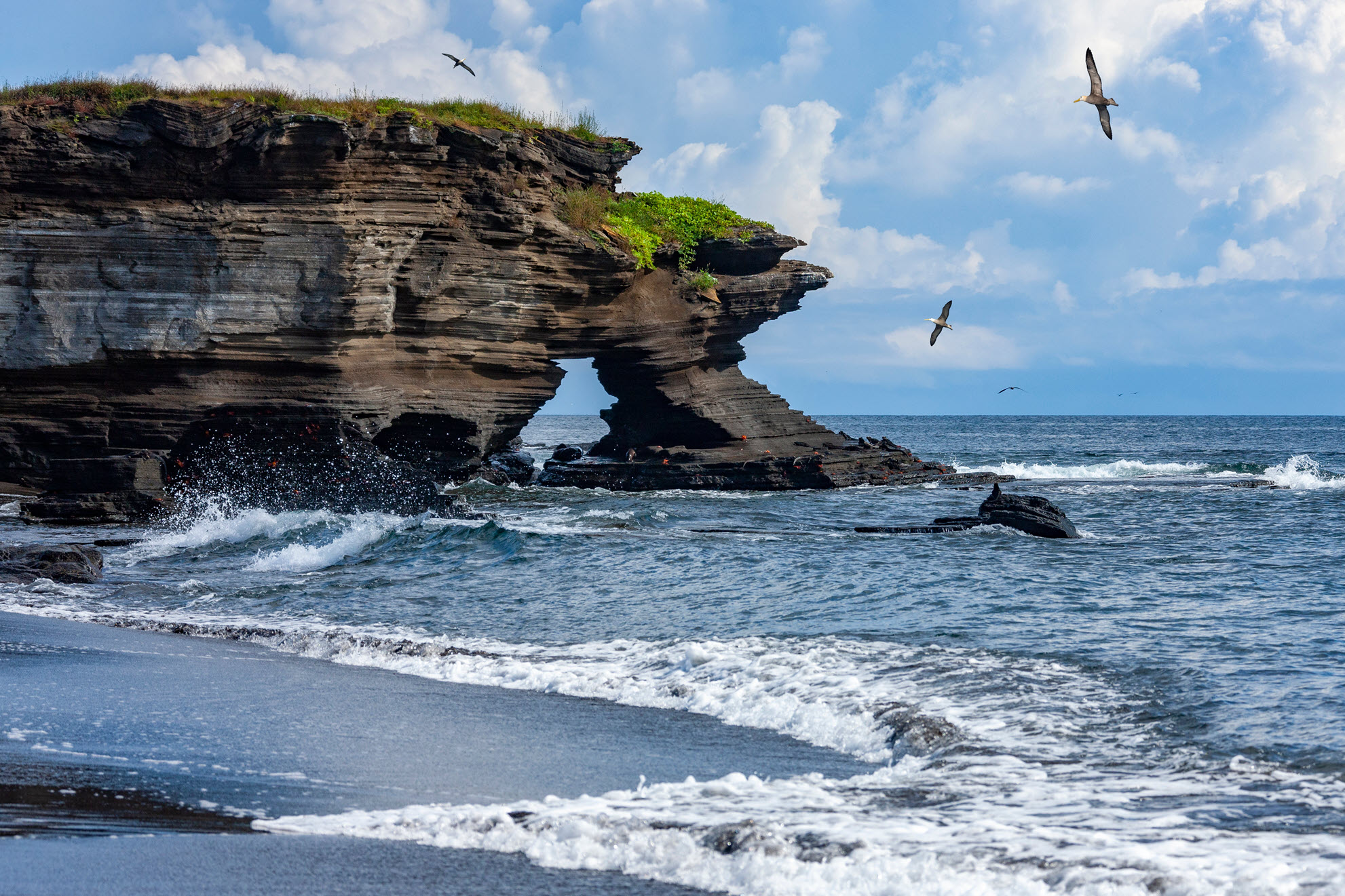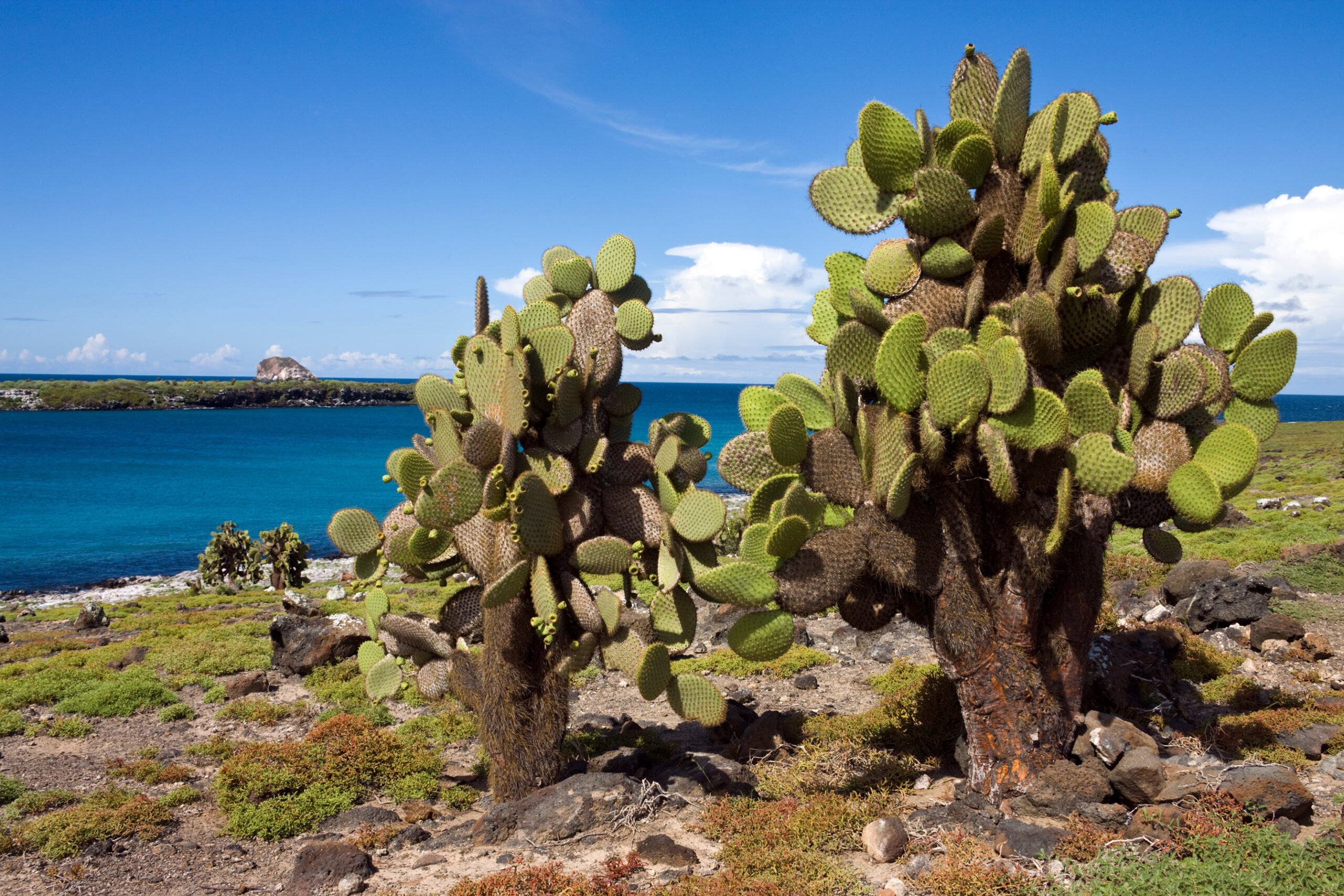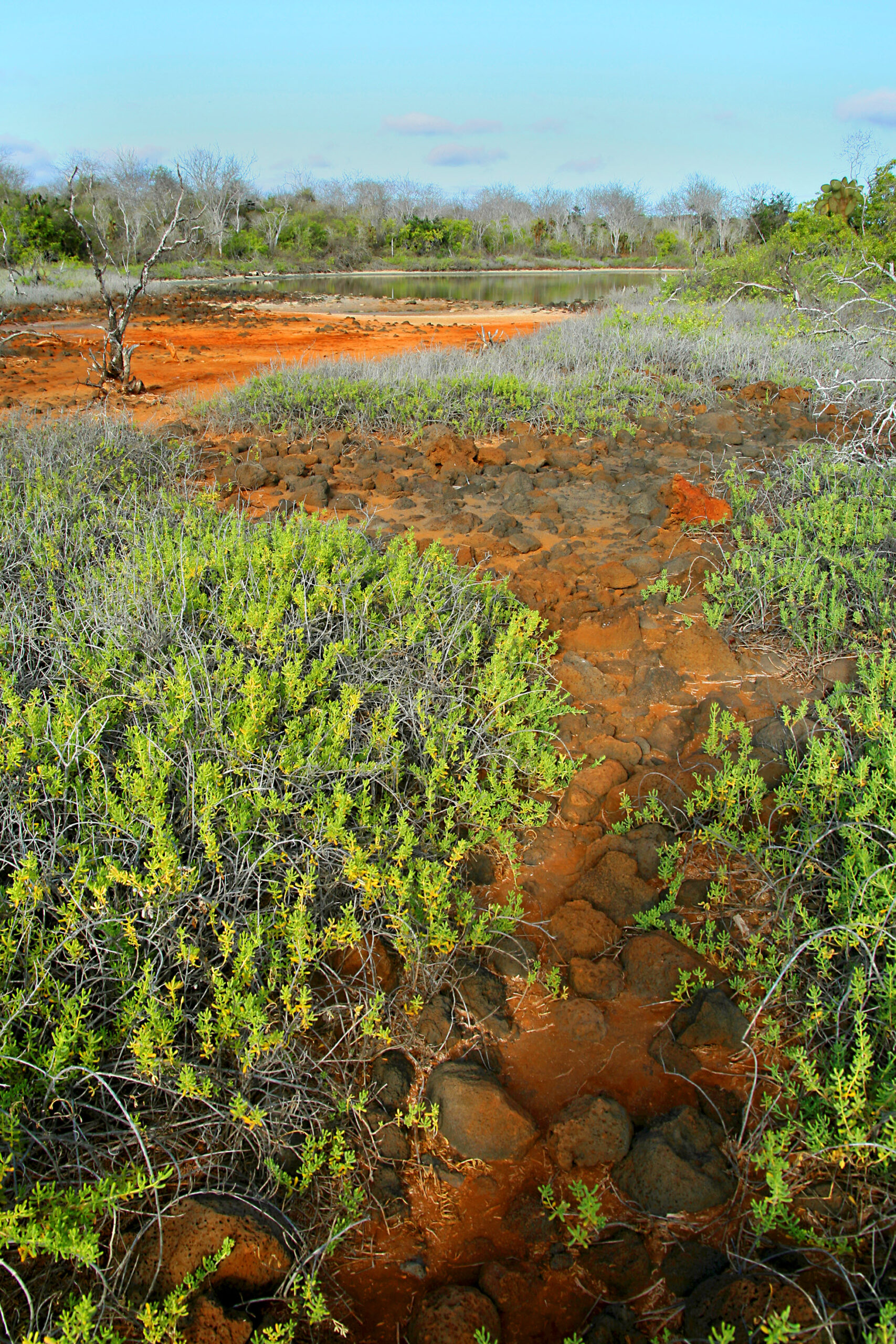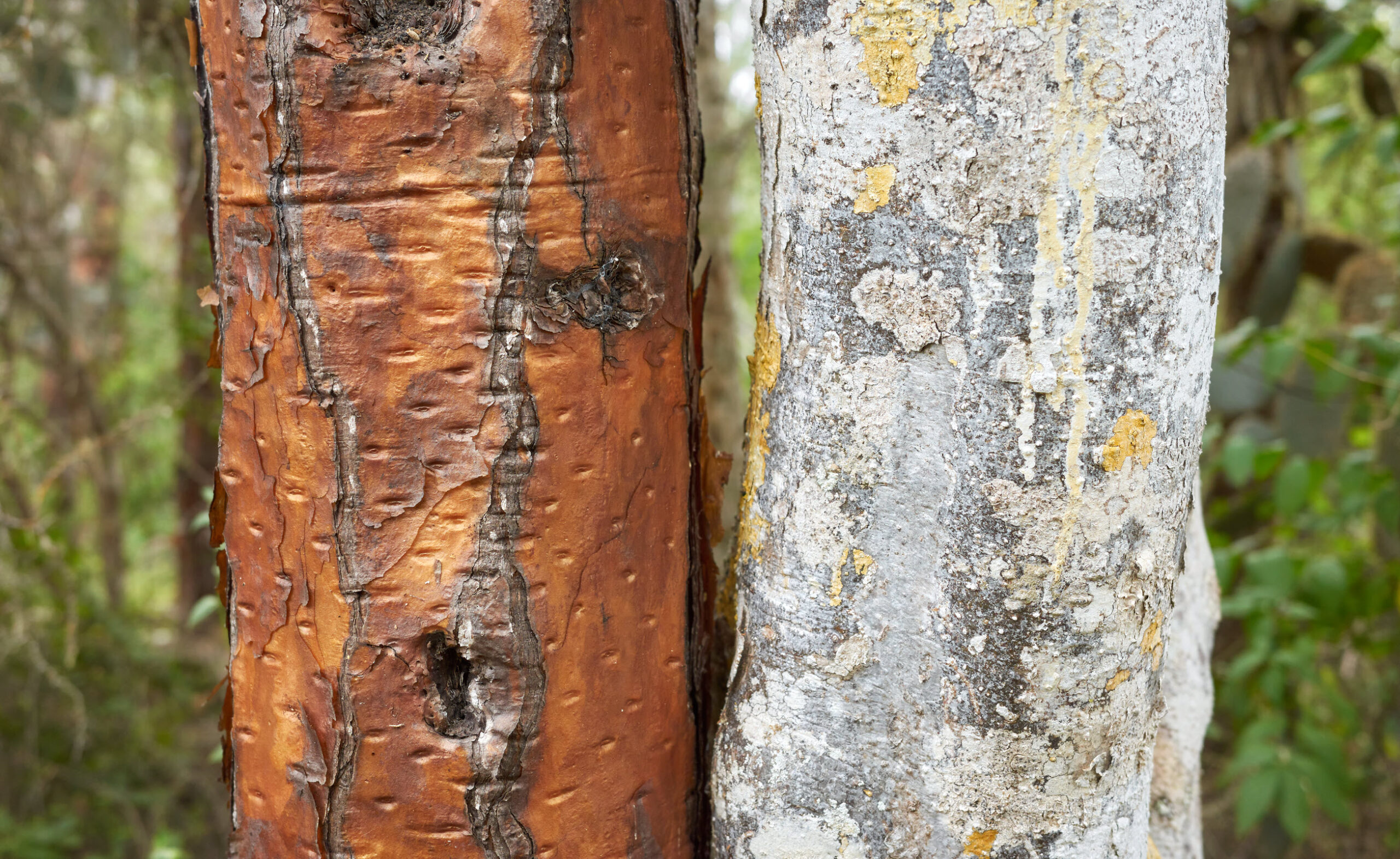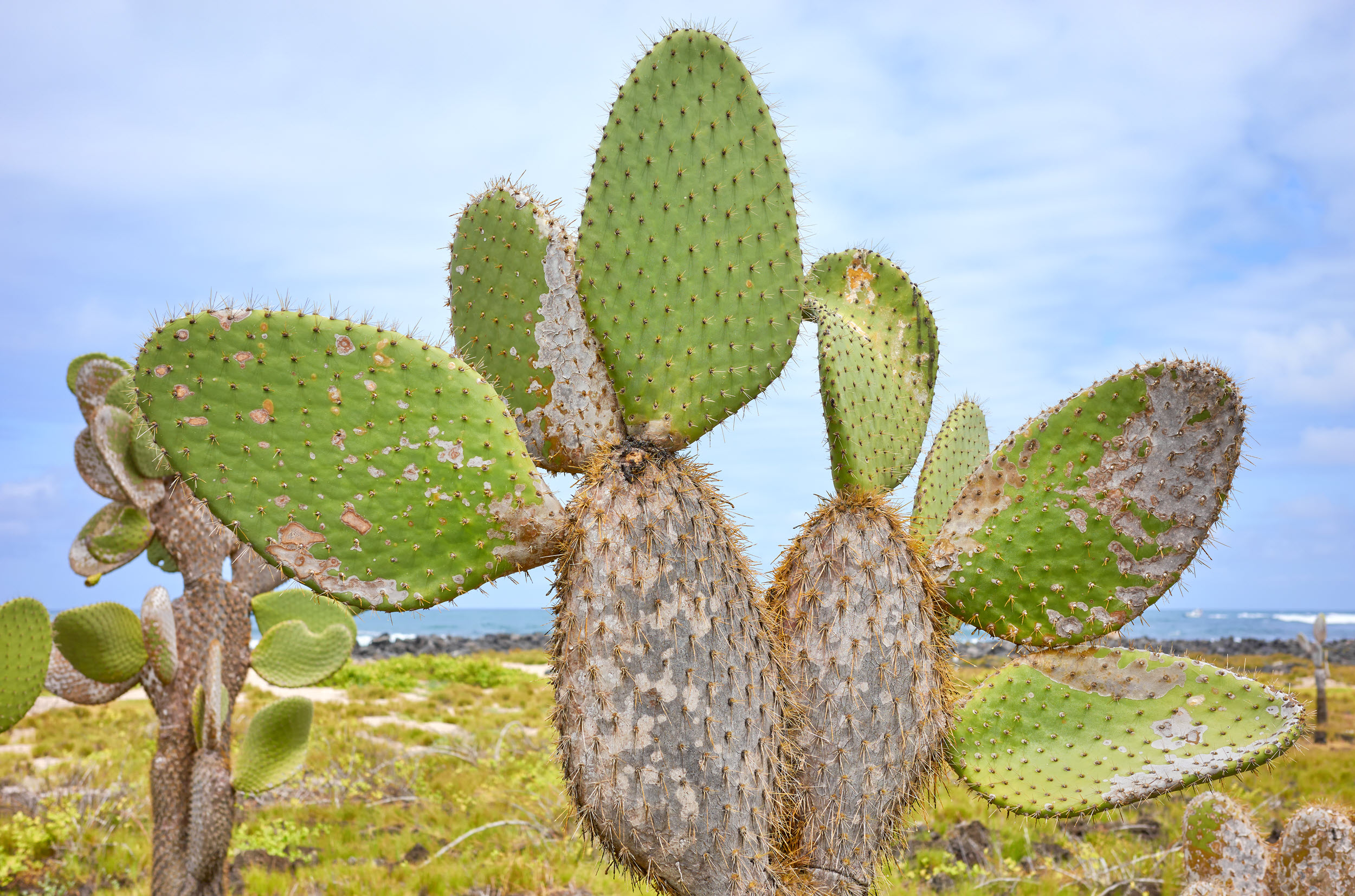The Galápagos Islands are renowned for their stunning and diverse landscapes. The archipelago, located in the Pacific Ocean, is known for its unique geology, which played a pivotal role in Charles Darwin’s theory of evolution. Here are some of the key landscapes you can expect to encounter in the Galápagos:
1. Volcanic Craters: The Galápagos Islands are volcanic in origin, and you’ll find numerous volcanic craters and calderas throughout the archipelago. These craters can vary in size and shape and are often surrounded by lush vegetation.
2. Lava Fields: The islands are covered with extensive lava fields, both old and recent. The black, barren lava fields offer a stark and otherworldly contrast to the islands’ more lush and biodiverse regions.
3. Sandy Beaches: Many of the Galápagos Islands have pristine, sandy beaches that provide nesting sites for sea turtles and sunbathing spots for marine iguanas and sea lions.
4. Rocky Coastlines: The coastlines of the Galápagos are often rugged and rocky, with dramatic cliffs and outcrops. These areas are favored by seabirds and marine life.
5. Highlands and Green Valleys: Some parts of the islands, particularly the higher elevations, are covered in lush, green vegetation. The highlands are home to a variety of plant and animal species, including giant tortoises.
6. Wetlands and Lagoons: Some islands have wetlands and lagoons that provide important habitats for bird species, including flamingos and various waterfowl.
7. Subtropical Forests: In the highland regions of some islands, you’ll find subtropical forests filled with endemic plant species. These forests are home to a variety of bird species and insects.
8. Mangrove Forests: Mangrove forests can be found along the coastlines of several islands. These unique ecosystems are important for various marine life and offer shelter and nesting sites for birds.
9. Underwater Landscapes: The underwater landscapes around the Galápagos Islands are equally diverse, featuring coral reefs, underwater caves, and rock formations. These underwater ecosystems support a wide range of marine species.
10. Pinnacle Rocks: Pinnacle rocks are a distinctive feature of Bartolomé Island. These tall, narrow volcanic formations offer a unique and photogenic backdrop for visitors.
The Galápagos Islands’ landscapes are as varied as its wildlife, and each island has its own unique character. The combination of geological wonders and diverse ecosystems has made the Galápagos a truly remarkable destination for nature lovers and ecotourists.

